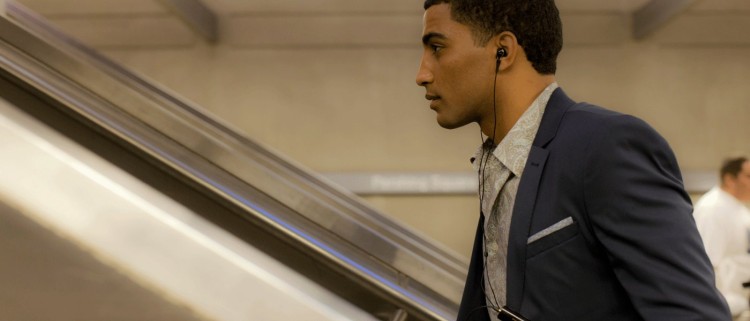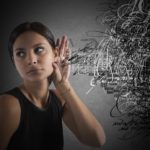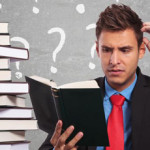Yesterday I sent out this tweet about learned deafness, although I didn’t know that was what it was called at the time. I just thought it was complete madness.
Lady did not hear people yelling at her to watch out as window cleaner dropped bucket. Why? Headphones. Now injured. #dangerous
Have you heard of learned deafness? I hadn’t.
Sensory disconnect
My Newtonian physics is but a distant memory, so I can’t tell you exactly the potential damage a bucket holding several litres of water would have caused, if it had scored a direct hit on her head. It didn’t. She was lucky. But it wouldn’t have been pretty. The only damage was collateral. She was splashed, which startled her and she tripped and hit her head against a parked car. She was completely oblivious to all auditory stimulation of literally, screamed alerts from passers by. Apparently the number of incidents involving pedestrians wearing headphones has tripled, while the number of accidents where cyclists and even motorists with headphones is also reported to be on the increase.
This trend of headphone or ear bud wearing, is very much associated with millennials, but actually this woman was of a “certain age.” Nor was she trying to block out noise pollution caused by jumbo jets or rush hour traffic. It was a beautiful day, with the only intrusive sounds being the merest quacking of ducks on the nearby pond.
That incident came hot on the heels of Martina Navratilova slamming tennis stars for walking onto centre court sporting headphones. She claimed that this was disconnecting the players from the crowd.
Kurt Fristrup, a senior scientist with the US National Park Service, said our modern-day obsession with wearing earphones to block out life around us, is leading into a sensory disconnect known as “inattentional blindness” or “learned deafness”
“There is a real danger, both of loss of auditory acuity, where we are exposed to noise for so long that we stop listening, but also a loss of listening habits, where we lose the ability to process what is going on around us”
Auditory streaming of an alternative reality, whether music, a book or the voice of another person, disconnects us and stops us being present in what is going on around us. We become wrapped up in “self” which only increases this learned deafness which leads to cognitive disengagement.
Survival and now success
The primal ability to listen both attentively and intently, and then respond in the most appropriate way has been vital to our survival for millenia. In a 21st century professional setting, it is key to success. In any face to face situation, the ability to read our environment is important, whether in an interview (Read: The declining art of conversation and Gen Y recruitment) or establishing our executive presence in any meeting or encounter where we are judged unconsciously by our approachability and our ability to respond and interact.
For some, the ability to read a situation is an innate competence. But for most it is a learned skill, built up over time from direct experience, observation or osmosis. With learned deafness we lose, or never acquire, that necessary ability to listen and ask the right questions. Being in tune with the people we are with and situations we are in , allows us to hone those skills that get us the right answers. If we fail to do this consistently, trust is lost and confidence impacted, as our instincts become unreliable and our judgment skewed.
With the generational growth of learned deafness and sensory and cognitive disconnect, the impact on professional interaction will be inevitable.
The question is what can we do about it?





